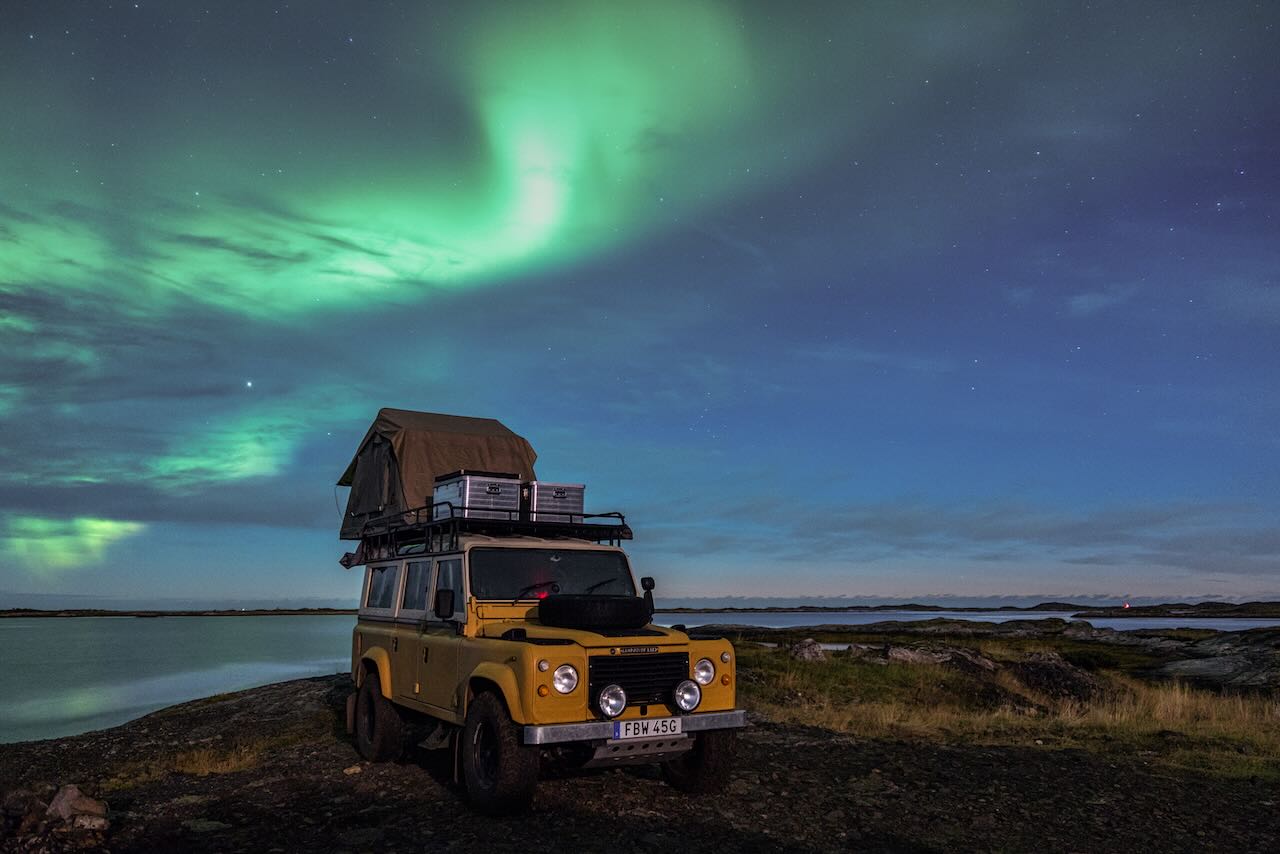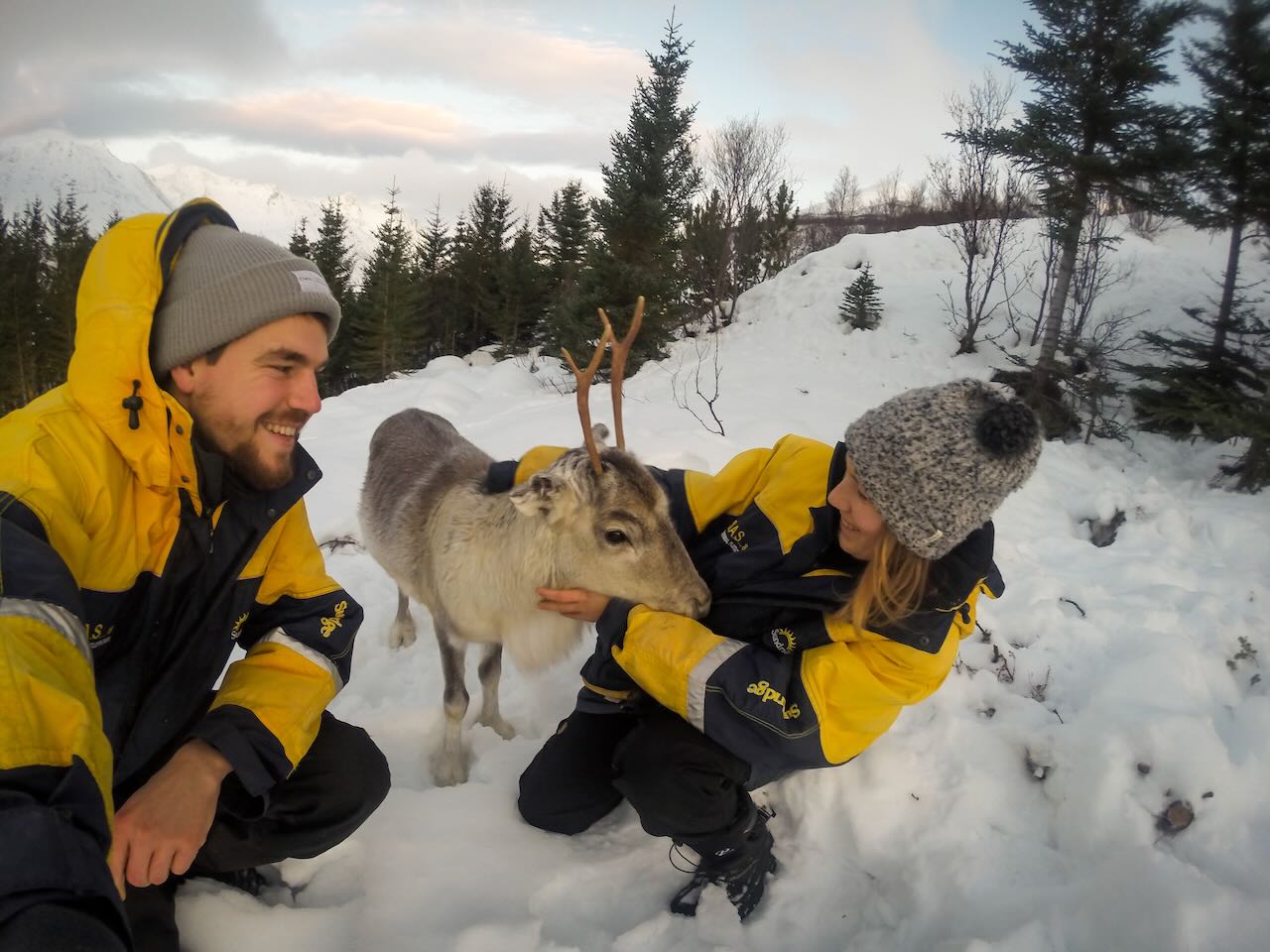Waking up to a blisteringly cold wind strong enough to rock our Land Rover from left to right and with temperatures well below zero, we got out from under our thick layer of wool blankets and opened the tailgate. We walked to a viewpoint where we could see just enough to distinguish the silhouettes of the cliffs from the ocean and could barely hear the sound of the massive waves above the storm. Standing there, it truly felt like we were at the end of the world, and it gave us a great sense of accomplishment to have reached the northernmost point of mainland Europe. Nordkapp was the main goal in our 6-month journey through Scandinavia, the first trip in our 1984 Land Rover One-Ten that we had just finished rebuilding and converting into a fully-equipped overlanding vehicle.
* * *
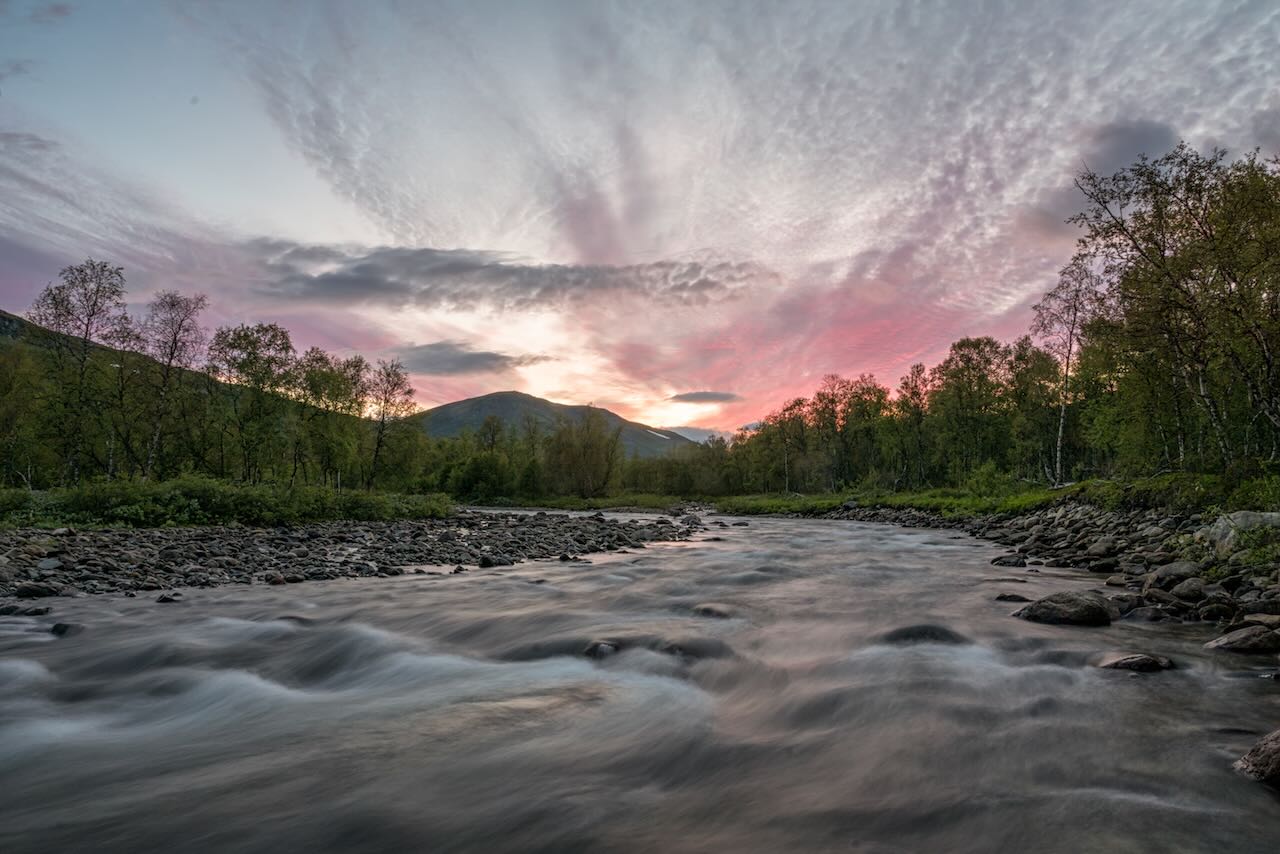
We had set off in early summer, starting from the Swedish West coast. As Malin’s family had spent the summer months here for years, we had already visited many of the iconic fishermen’s villages and rocky beaches and feasted on the country’s best seafood. As this is a popular summer holiday destination, it didn’t offer the freedom and solitude we were looking for, so we ventured more inland after only a few stops along the coast. Soon after we’d started driving toward the East, the landscape changed, and we found ourselves on dirt tracks leading deep into the forests, passing many lakes and quiet forests.
Sweden is famous for these landscapes, and we couldn’t be more excited to explore them with our own overland vehicle. It didn’t take long before spotting our first moose, Sweden’s most iconic wild animal. It was far bigger than we had imagined, with some adult bulls tall enough to see over the top of our roof rack. The countless lakes offered stunning wild camp opportunities, and the feeling of freedom started growing on us. All Scandinavian countries have a unique law of public access, which in Sweden, they call “Allemansrätten.” This translates to “every man’s right” and allows residents and visitors to roam freely and explore the country’s natural beauty. The rules apply to both land and water and are very simple: as long as you don’t disturb the landowner or cause damage to nature in any way, you are free to pitch up a tent or moor your boat for a night or two, or even fill a basket with wild berries or mushrooms.
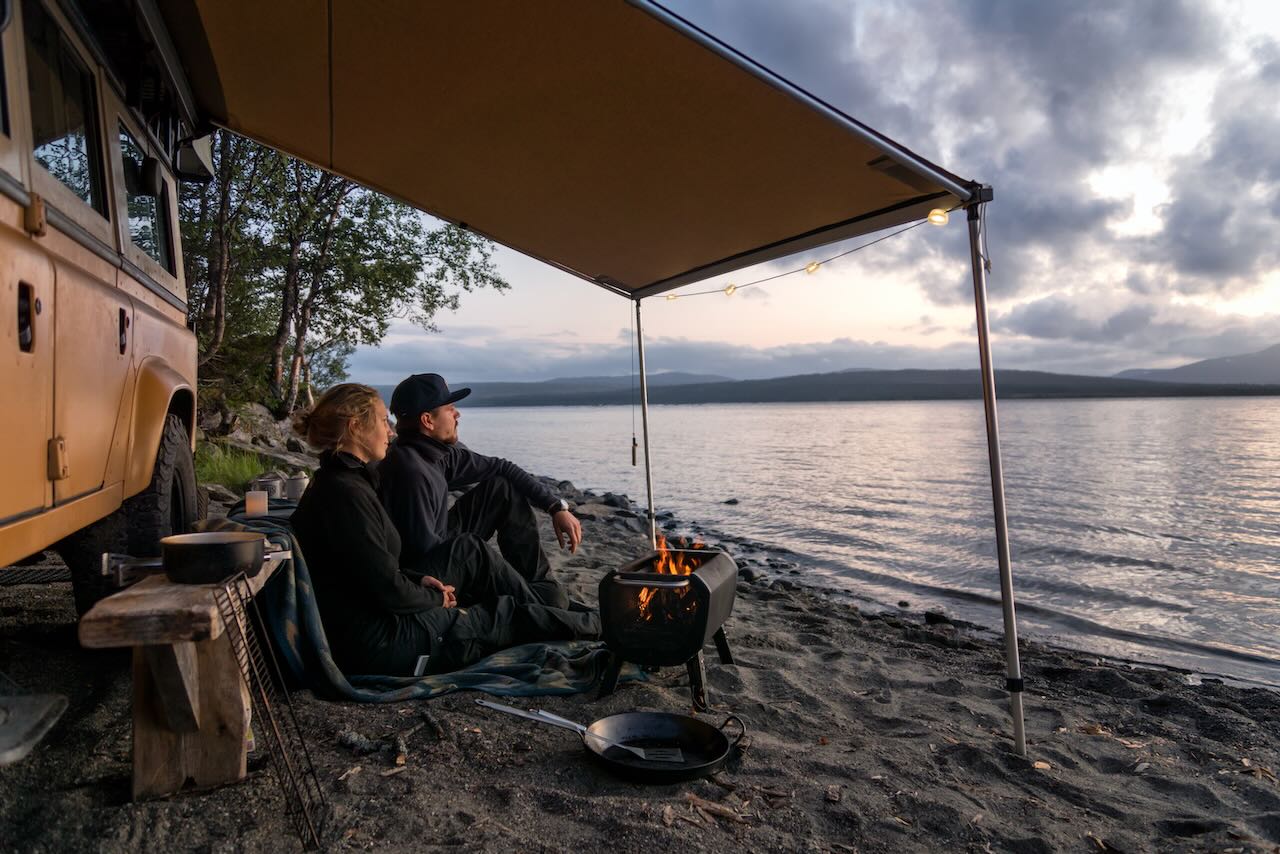
The impressive Skuleskogen National Park on the Bothnian coast is a true paradise for hiking, with high mountains, old-growth forests, and the wild coastline coming together in a landscape found nowhere else in the country. On our way across the country towards Norway, we followed a route locals told us not to miss. It’s called “The Wilderness Road,” one of the highest roads in Sweden and known to be one of the most scenic. The area has less than one inhabitant per square kilometre, and it is home to traditional Sami villages and the Stekenjokk Plateau, where snow depths can reach up to six meters during winter. Even in July, when we were passing through, the snow hadn’t completely cleared yet.
The Land Rover had been performing great so far, but unavoidably the first challenge came in the way of a leak from around the fuel tank, which was slowly worsening. After a thorough inspection and temporary fix, we decided to head to a nearby campsite to work on it and wait for a new fuel tank to arrive from the UK.
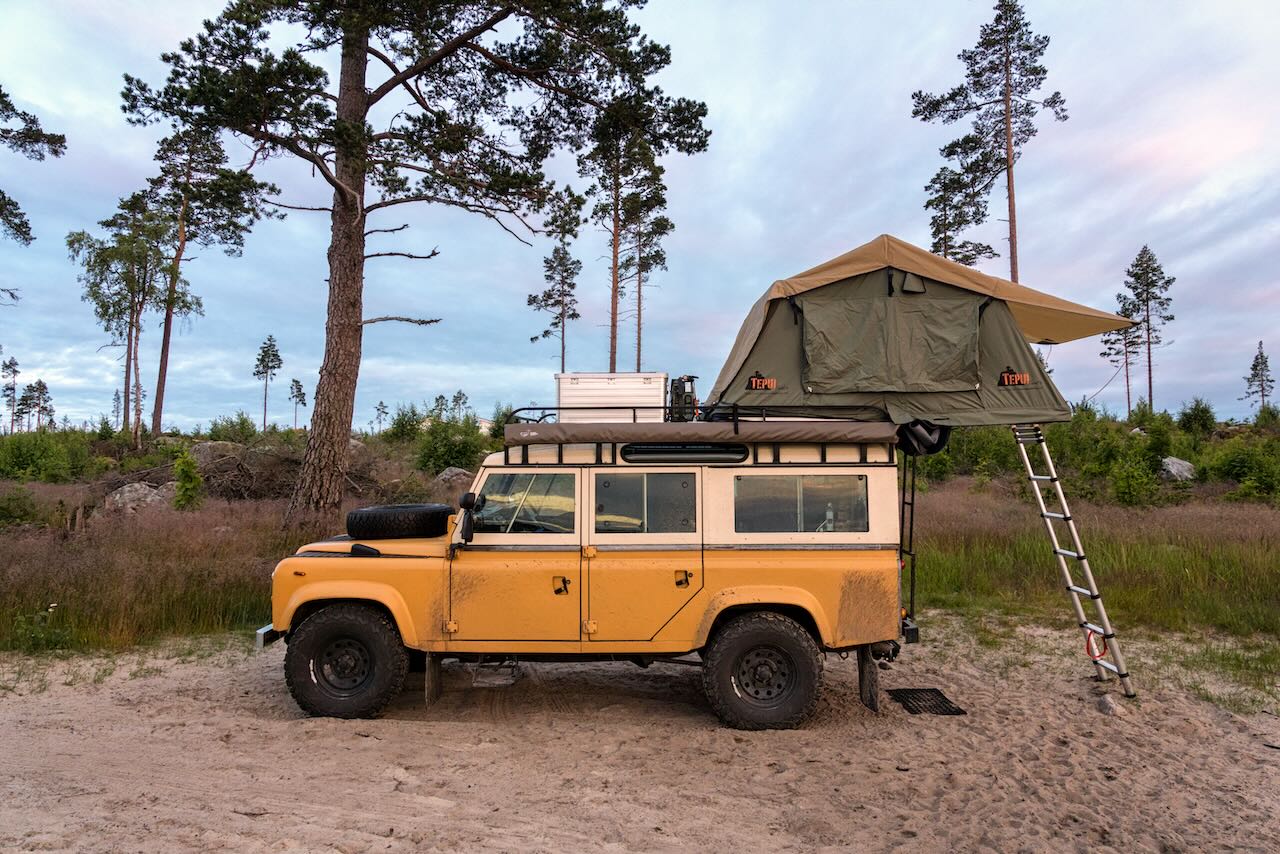
Finally in Norway, we drove north along the longest Norwegian scenic route, named “Helgelandskysten.” It is 433 km long, including six ferries, and crosses the Arctic Circle at 66ºN. The landscapes were incredibly diverse, with many natural phenomena, like the world’s strongest tidal current and the second-largest glacier in the country. At the beginning of October, the days were slowly getting shorter, and temperatures started to drop, which meant that on the famous Lofoten Islands, we could see the first glimpse of the Northern Lights, a magical and unforgettable experience.
After exploring the less touristy but equally gorgeous archipelago of Vesterålen, conditions were quickly getting harsher as we headed further north. Daily life was becoming more and more challenging; things like cooking, washing, and sleeping weren’t as easy anymore. Also, driving was getting more dangerous on the icy roads with temperatures around -18ºC. But we deliberately chose to experience a real Arctic winter. We woke several mornings to a completely frozen car, and ice had formed on nearly every inch of exposed metal inside the vehicle. Realizing we’d underestimated these conditions during the build, we started researching our options to improve our heating system as soon as possible. So far, we’d been using a small, portable gas heater, but found out these stop working at temperatures far below zero.
We briefly crossed the border again into Sweden to visit a place we couldn’t pass up, most certainly not at this time of year: Abisko National Park. Besides being a beautiful area, it offers some of the best conditions in the world for watching the aurora borealis. There is minimal light pollution, and, most importantly, the skies are very often clear due to the unique microclimate. Of course, being a natural phenomenon, nothing is guaranteed, but the forecast looked very promising. Dressed in five layers of clothing and with our camera gear on standby, we stepped out of the Land Rover to check the conditions.
There were clear skies and little moonlight, and it didn’t take long before the first oddly shaped greyish “cloud” appeared. We knew that the human eye couldn’t see the colours when the light was too faint, so after taking a long-exposure shot, the screen of our camera turned utterly green. Within seconds, that same cloud transformed into a bright green shape, with others forming right next to it. They started to dance gracefully and were getting more intense by the second, adding shades of purple and fast movements, and we couldn’t believe it was happening. Without a doubt, this was one of the highlights of the whole trip.

After returning to Norwegian soil and a short stop in Narvik (known for the Ofoten Railway that has transported more than 1 billion tons of iron ore from Sweden to its ice-free port), we headed for Senja. This is Norway’s second-largest island, home to just 8,000 people, and is often called “Norway in miniature.” Here you’ll find beautiful white sandy beaches with crystal clear waters home to humpback whales and orcas. The coastal roads were a dream to drive, passing by spectacular fjords, tiny fishing villages, and rugged mountains, all while meeting hardly any other tourists. We climbed one of Norway’s most iconic mountain peaks, Segla, a relatively short hike ascending around 650 meters. Unfortunately, we only had a short time to enjoy the view from the top over the surrounding fjords and mountains, as we were hit by an unexpected snowfall that made the descent much more challenging.
With great help from some very kind Norwegian Land Rover Club members, we arranged a safe parking spot in Tromsø while we flew home for a week to visit family. We used this time also to apply for a volunteering experience we’d found in Alta, on the remote island of Seiland, to slow down our traveling and to see a bit more about the local way of life. For a month, we lived in a former boarding school that the current owners turned into a guest house, surrounded by wild nature, where our tasks included maintaining the property, clearing snow, and, best of all, taking care of a young reindeer. Almost every night, we went outside to gaze up at the sky, where if there wasn’t any aurora activity, there still were the incredibly clear stars and constellations to behold. Another benefit of staying in one place for a while was that we could arrange to ship a diesel heater to install in the Land Rover, which arrived surprisingly fast at our doorstep. Since we couldn’t bring the One-Ten to the island, we had to install the new system in the port’s parking lot. Conditions were far from ideal, with only a few hours of twilight, a thick layer of snow, temperatures below zero, and no shops or bars to warm up in. Luckily, we got everything to work in about an hour or two, and feeling the first warm air blowing on our frozen hands was pure bliss.
We even ran the heater while driving, as the standard Land Rover heating system doesn’t have the greatest output. It was a much-needed addition to our setup, and we could now comfortably continue our journey toward the North Cape. It was around a 4-hour drive to get to Nordkapp, of which every minute was spectacular. The deep blue colours of the polar night, the magical snow-covered landscape, and the unbelievable tranquility made it one of the most beautiful driving experiences we’ve ever experienced.
* * *
As it was now December, it was time to return to the Swedish West coast to be home for Christmas. With less than two weeks left, we drove south through Finland. Our first stop was Rovaniemi, the famous and, therefore, the very touristy official hometown of Santa Claus. Despite the heavy snowfall, the main roads were still in good condition, and we could cover decent daily distances. The main challenge was the darkness driving through dense forests, where the danger of a moose crossing the road was constant. In Finland, finding stunning camping spots wasn’t a problem, and we promised to visit this country again in spring or summer to be able to enjoy the lakes and forests now covered under a thick layer of snow and ice. After visiting the capital Helsinki, we took the ferry to Sweden, bringing our first real overlanding adventure to an end.
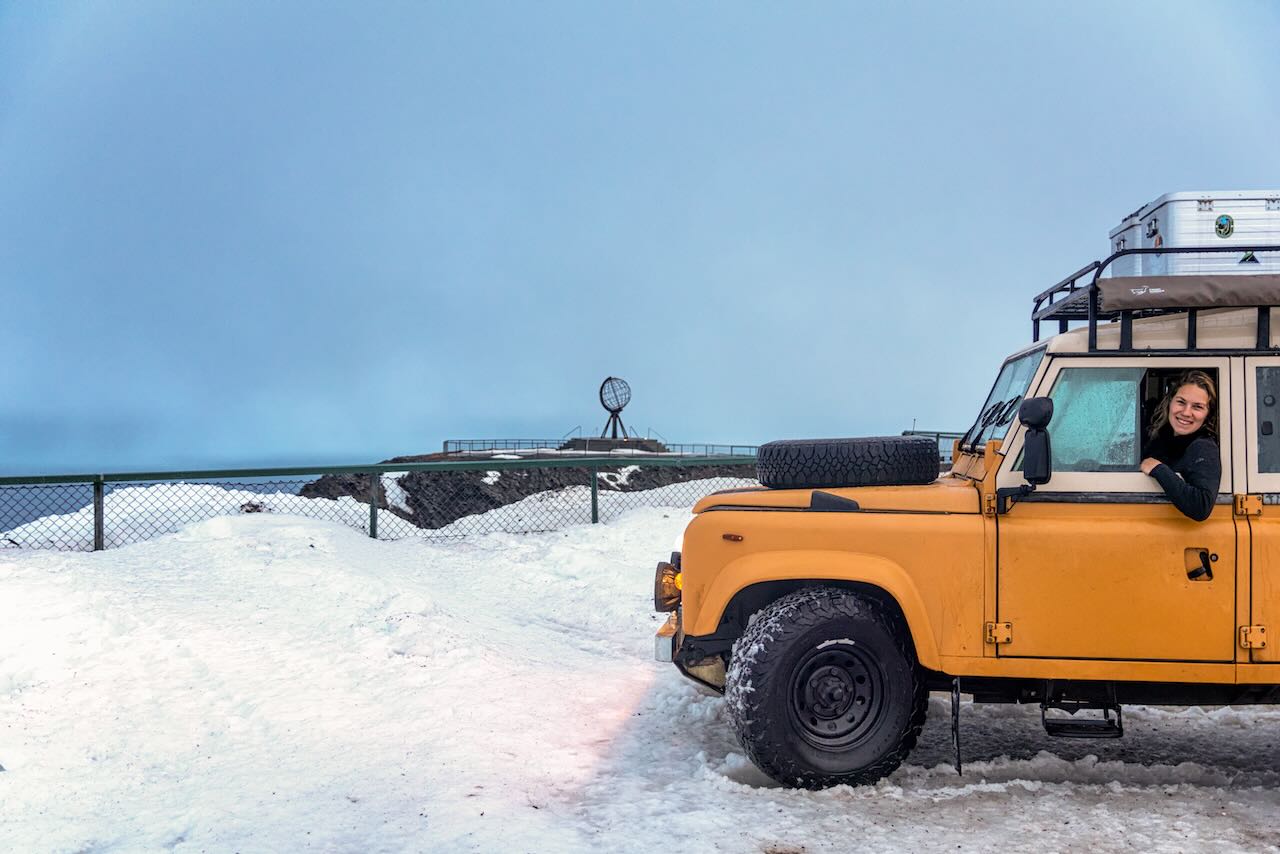
During the last two hours of driving before arriving home, we had to deal with an insanely heavy downpour that caused a lot of water to leak into Land Rover’s cabin, leading to all sorts of problems. Still, nothing could stop us from having a continuous smile on our faces, reminiscing about the fantastic memories we’d made over the last couple of months. It had changed our way of thinking and our perception of the beautiful world we live in, and it was clearer than ever; we just had to keep exploring it.
Our No Compromise Clause: We carefully screen all contributors to ensure they are independent and impartial. We never have and never will accept advertorial, and we do not allow advertising to influence our product or destination reviews.


